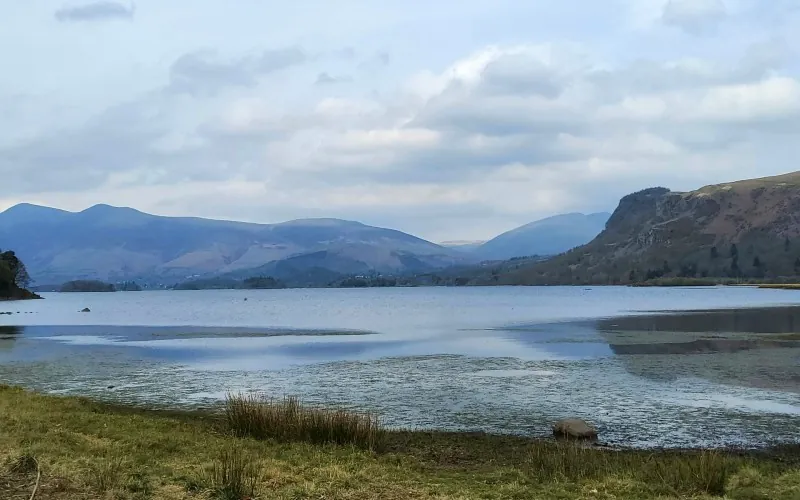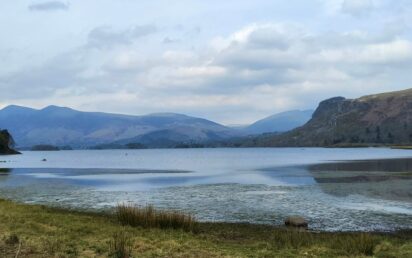UNESCO World Heritage Sites represent some of the most significant natural and cultural landmarks around the globe, so if you get the chance to see any of them up close on your travels, you’re in for an unforgettable time. Each site is recognised for its unique contribution to our shared heritage, offering a glimpse into the extraordinary beauty and historical depth of our planet.
With 1,223 World Heritage Sites as of July 2024, it can be quite the challenge to see all of them, so to help, below we’ve picked 4 that are definite highlights (tough pick, we know!). Of these, two are closer than you think, so there’s no excuse not to make plans to see at least one of them this year.
Planning Your UNESCO Heritage Site Visit
Visiting a UNESCO World Heritage Site needs thoughtful preparation to fully appreciate and responsibly enjoy them. Firstly, research the best times to visit, as some sites might be seasonal or have specific viewing conditions. Ensure you understand the local travel requirements, including any permits or special tickets needed for entry. Since these sites can range from remote natural wonders to bustling historic towns, consider how you are going to get there —whether it’s renting a car, using public transport, or joining a guided tour. Most importantly, ensure you’ve checked your passport expiry date before booking anything – you won’t want to be caught out at the airport.
Considering that some sites are a considerable flight away or may involve a more active itinerary to see, be sure to get comprehensive travel insurance. If you want to ensure you’re covered for everything from travel delays to medical emergencies, be savvy with your choice of policy. This is crucial for more adventurous or isolated destinations. Ideally, you want to select medical travel insurance that covers any pre-existing conditions you may have or a policy that covers up to unlimited medical expenses. If anything does go wrong whilst enjoying your time away, you’ll at least have peace of mind you’ve got the right coverage from a trusted provider.
Planning ahead not only enhances your experience but also helps preserve these sites for others to enjoy.
#1 – UK – The Lake District
First on the list is one that you won’t need your passport for as it’s right here in the UK, and if you haven’t already enjoyed a week or two in the Lake District, you’re certainly missing out.
Nestled in the northwest of England, the Lake District is renowned for its postcard-perfect landscapes that have inspired everyone from artists to authors for centuries, including Beatrix Potter who owned not one but 14 farms, 4,000 acres, and dozens of Hendrick sheep. This UNESCO World Heritage Site is celebrated not only for its breathtaking views of craggy hilltops and serene lakes across 2,292 square kilometres but also for its rich cultural heritage, deeply rooted in agricultural traditions that include the rearing of cattle and native breeds of sheep.
Becoming a World Heritage Site in 2017, you can explore over a dozen shimmering lakes, including Windermere, the largest natural lake in England, perfect for boating and fishing. Surrounding the lakes are miles of trails suitable for all levels of hikers and bikers looking to immerse themselves in the natural beauty of the area. Guided tours that highlight the history of the area, including visits to Beatrix Potter’s Hill Top Farm or the historic homes of William Wordsworth are worth a trip alone. The region’s towns, such as Keswick and Ambleside, offer charming accommodations and delightful local cuisine, with cosy pubs and boutique shops. Whether you’re looking for a tranquil retreat or adventurous outdoor activities, the Lake District caters to all visitors, making it a quintessential part of the UK’s cultural and natural legacy.
#2 – Australia – Great Barrier Reef
Venturing to the other side of the world, The Great Barrier Reef, off the coast of Queensland, Australia, is the world’s largest coral reef system and one of the most famous underwater ecosystems on the planet. A UNESCO World Heritage Site since 1981, it spans over 348,000 square kilometres, making it visible from space, comprising thousands of reefs and hundreds of islands made of over 400 types of coral.
Diving and snorkelling in the Great Barrier Reef are unparalleled experiences that are a bucket list item for many, offering encounters with a vivid mosaic of marine life including colourful fish, molluscs, starfish, turtles, sharks, and dolphins. There are 1,500 species of fish and 4,000 types of molluscs, so there is plenty of life in the expansive area. The reef’s warm waters are welcoming year-round, but visiting between May – October can be best for underwater visibility.
Conservation is of course a key focus due to threats like coral bleaching and climate change, so visitors are encouraged to engage with eco-friendly tour operators and follow guidelines that help minimise their impact on the fragile ecosystem. By visiting the Great Barrier Reef, you not only get to experience one of the natural wonders of the world but also contribute to the ongoing efforts to preserve this irreplaceable marine habitat for future generations.
#3 – France – Mont-Saint-Michel
If you’re planning a trip across the channel, a visit to Mont-Saint-Michel is a must. Standing as a striking feature of the French landscape between Normandy and Brittany, this small rocky island and its medieval monastery, is one of France’s most iconic landmarks, a UNESCO World Heritage Site since 1979. The architecture of Mont Saint-Michel and its bay is stunning, looking like something from a J.R.R. Tolkien novel, showing what can be achieved in such challenging environments considering it was built between the 11th and 16th centuries.
To visit Mont-Saint-Michel, you’ll need to traverse the causeway that connects it to the mainland, accessible by foot, shuttle, or horse-drawn carriage – of course, some of the best photo opportunities will come from looking towards the island, but trekking across is well worth it.
Once on the island, visitors can explore the narrow, winding streets of the village below the abbey where you can find museums, restaurants, shops and hotels. The climb to the abbey itself is steep but rewarding, offering panoramic views of the surrounding bay and landscapes at high tide. If you do stay overnight on Mont-Saint-Michel, the island transforms into a serene, mystical place once the day-trippers depart, adding another dimension to your visit.
#4 – Iceland – Vatnajökull National Park
Lastly is one World Heritage Site that isn’t too far from the UK and that’s Vatnajökull National Park in Iceland, added to the list in 2019. Named after Europe’s largest glacier, Vatnajökull, is a dynamic landscape of fire and ice, covering an area of 8,100 – 8,300 square kilometres. This UNESCO World Heritage Site encompasses not just the glacier itself but also extensive surrounding areas. Volcanic regions with active geothermal areas are in stark contrast against the immense ice cap, offering breathtaking scenery of flat lava flows and mountains.
You can experience a variety of activities that highlight this diverse environment. Glacier hiking and ice-caving tours offer an up-close look at the park’s frozen features, while jeep and snowmobile tours provide access to more remote areas if you’re feeling adventurous. The park’s volcanic activity can be observed by visiting places like Askja and the hot springs at Grímsvötn.
For those seeking a deeper understanding of the park’s geological and environmental significance, the visitor centres are the best place to start, providing exhibitions and guided tours that explain the ongoing scientific research and conservation efforts of the area.
There’s Much More to Discover…
Visiting UNESCO World Heritage Sites like the four above will certainly enhance a visit to any of these countries, but if you’re already planning on a different destination, see which sites are nearest to you. You can find the full World Heritage list from UNESCO here, so you should be able to find at least one on your global travels.


